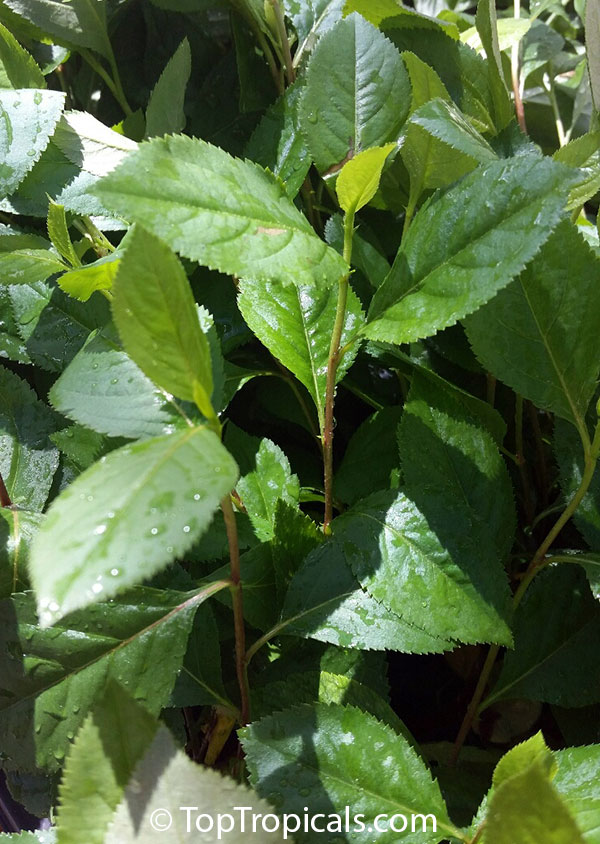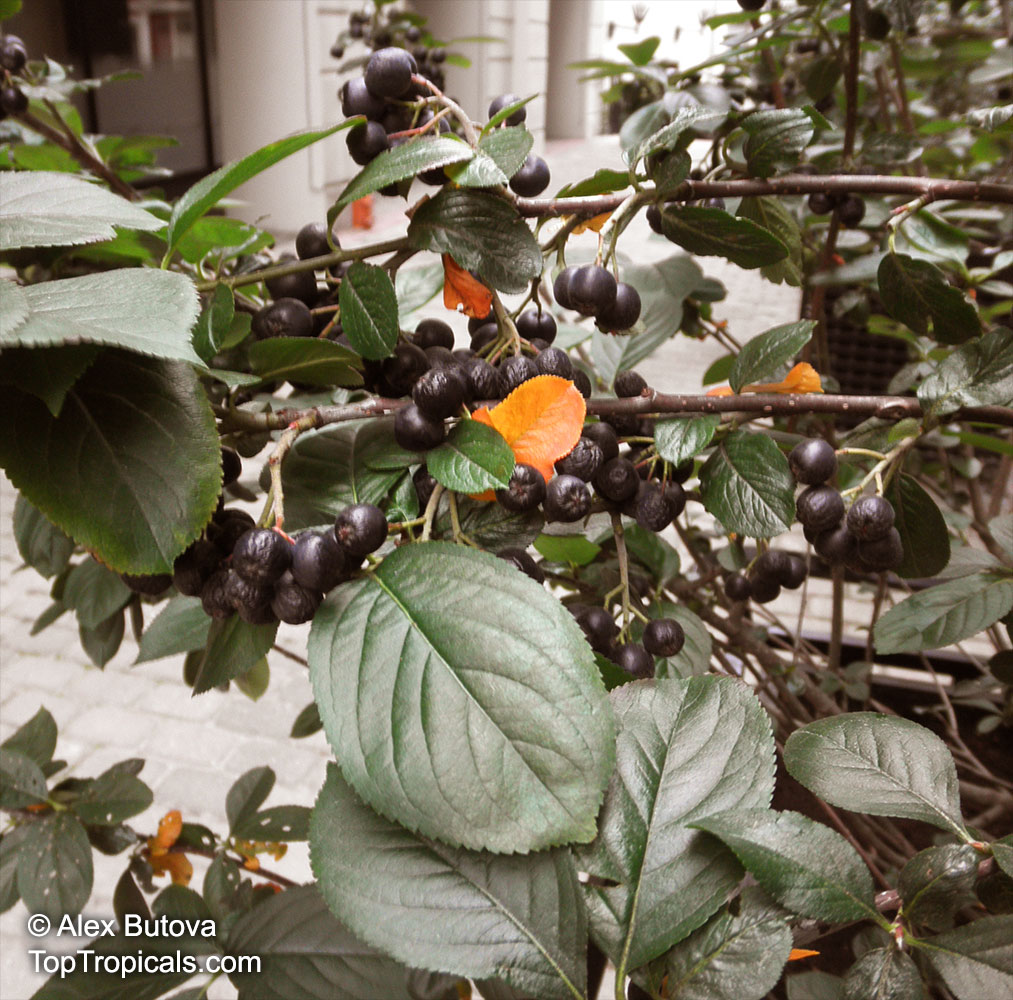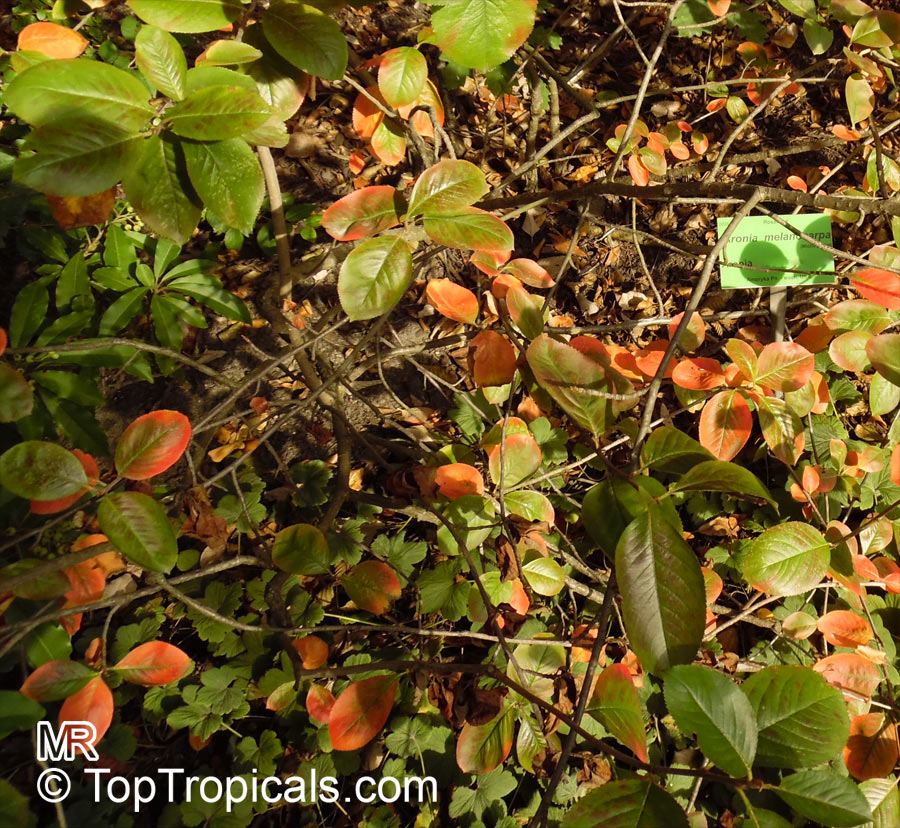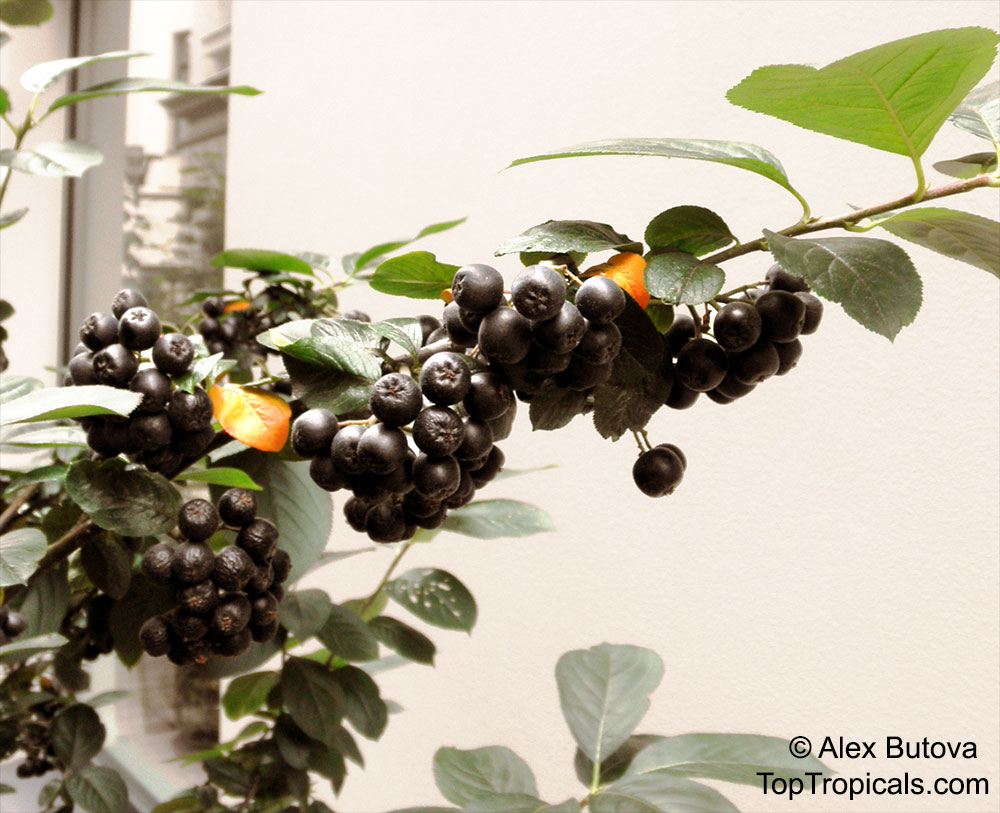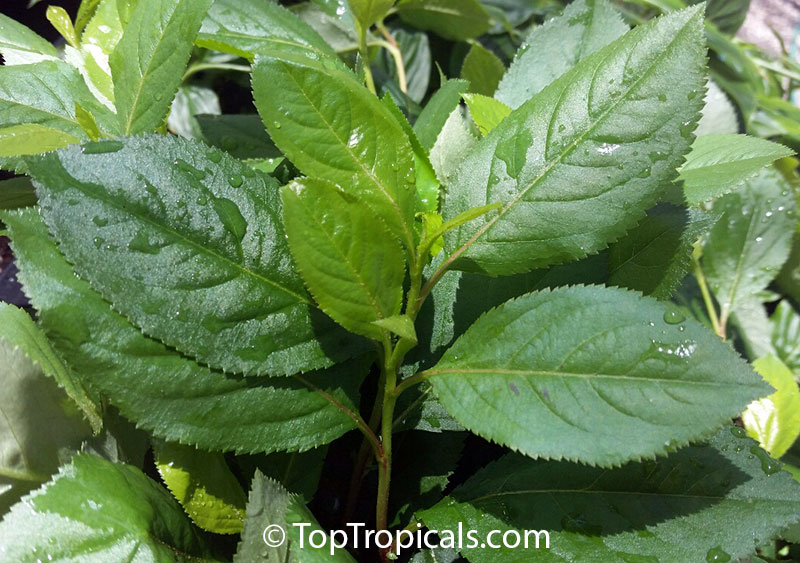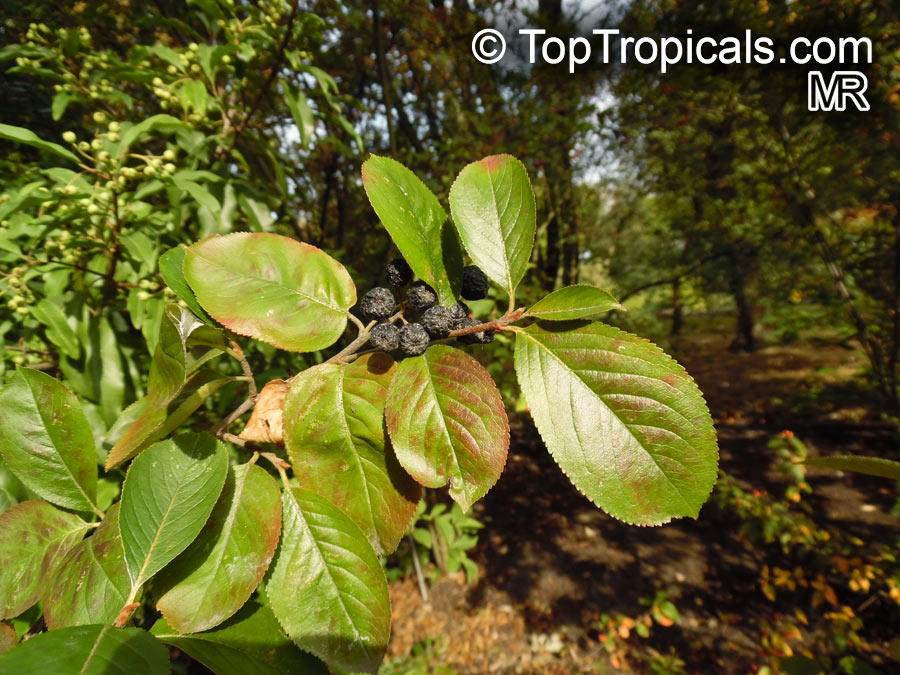Aronia melanocarpa (Chokeberry)
Top Tropicals Plant Encyclopedia
Botanical name: Aronia melanocarpa
Common name: Chokeberry
Family: Rosaceae
Origin: North America










Native to eastern North America and most commonly found in wet woods and swamps, Aronia is also naturalized in Europe.
Chokeberries are cultivated as ornamental plants and as food products. The sour berries can be eaten raw off the bush, but are more frequently processed. They can be found in wine, jam, syrup, juice, soft spreads, tea, salsa, chili starters, extracts, beer, ice cream, gummies and tinctures. The name "chokeberry" comes from the astringency of the fruits, which create a sensation making one's mouth pucker.
Cultivar Viking was selected in Europe for use in orchards but gardeners quickly discovered it's many attributes as a landscape plant. Masses of fragrant, white flowers bloom in spring a bit earlier than the species. Gorgeous red fall colors and extra large berries follow the glossy summer foliage. Persistent, purplish black berries are high in nutrients and can be used for pies and jellies or left on the shrub to provide food for birds and other wildlife. The berries can persist into spring feeding the first returning robins. Viking is self-fertile, so you need plant only one for a full crop of berries. It needs no pruning, is quite drought-tolerant once established in your garden, and as a native shrub, has proven remarkably resistant to pests and diseases. In other words, it is utterly trouble-free and very, low maintenance. USDA hardiness zone 3-9.
Aronia berries are harvested in September and October. Enjoy them in an array of foods as they are rich in vitamins. One of the true super fruits, they are high in antioxidants with huge health benefits. This fruit is used in Eastern Europe in holistic medicine for lowering blood pressure. Fruit should be consumed with caution as excessive amount can cause significant blood pressure drop.
See article: Cold hardy Aronia and its Superfruit: a Magic gift from the Native Americans
